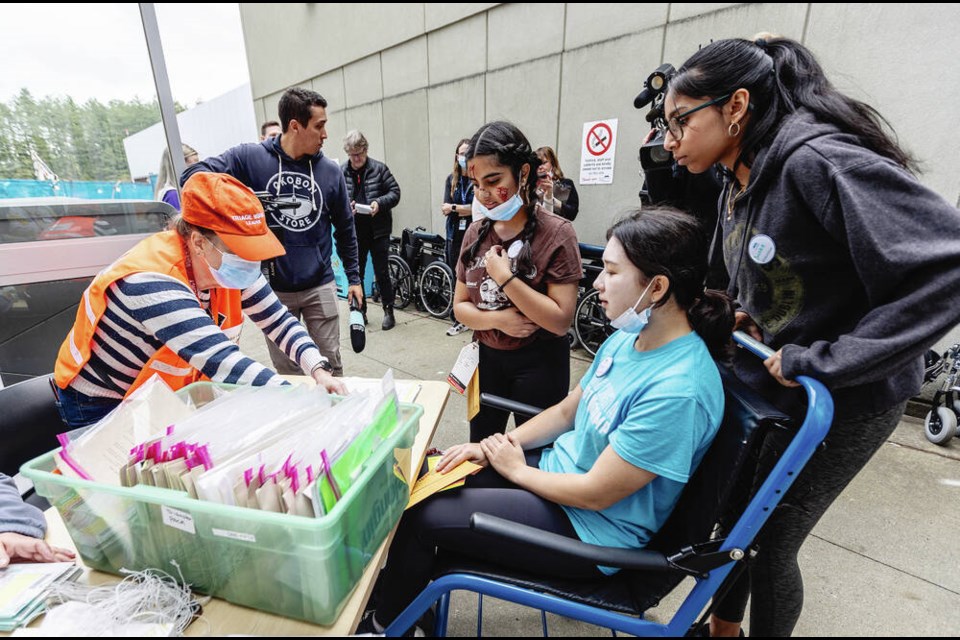Megan Salaga was in a wheelchair when she showed up at Victoria General Hospital on Friday, with a large bruise on her head and a nasty gash on her right leg.
The Grade 12 student from Pacific Christian School was among dozens going through triage at the hospital’s emergency department, where health care staff determined who was most badly hurt and in need of treatment.
It wasn’t for real, but it could have been.
The “code orange” scenario playing out as a learning exercise for health-care workers was that 40 people had just been injured in a bus crash near Goldstream Provincial Park, and 12 were in critical condition.
“I’m doing this because I want to know more about what the hospital setting is like, especially in the ER,” said Megan, one of 40 high-school students posing as victims.
Students were gathered near the emergency department and told their conditions, ranging from minor injuries to fatalities, before being sent to triage.
There was a girl in a wheelchair who was feigning unconsciousness, another girl with a head bandage stained with faux blood and a boy with a pronounced limp moaning in pain with a leg injury.
They were quickly looked at by a nurse and other staff, with real-life triage nurse Cindy-Lynn Loucks heading up the evaluations.
Colour codes were assigned to each patient, with red indicating immediate treatment was needed, yellow meaning treatment could be somewhat delayed and green for minor wounds. A black marker was given to those who were dead on arrival.
Loucks said she was triaging the victims based on the assessment information that came with them from the incident scene, recorded on a card.
“I have to triage and make sure that nothing has changed, and then I’m going to direct them to where I feel is best-suited for their injury process.”
Grade 12 Oak Bay High School student Elisabeth Foss — who was preparing to head to emergency with a hip injury and a three-centimetre laceration on her forehead — said she volunteered because she is hoping for a career in the health-care field, and looked at the exercise as a chance to help out with something important.
“It really feels like I’m doing good for my community,” she said. “They said they haven’t done this in a couple of years so I feel quite lucky to be part of it this year.”
Gillian Kozinka, executive director of clinical operations at VGH, said the mass-casualty practice was organized by Island Health and Health Emergency Management B.C. to ensure procedures are in place to handle such an event.
She said the last time a real mass-casualty event occurred on the Island was in 2019, when a bus carrying University of Victoria students crashed on the way to Bamfield. Two of the 45 students on the bus were killed.
In that case, there was a real code orange at West Coast General Hospital in Port Alberni.
“This is an opportunity for us to test ourselves in a moment of crisis,” said Kozinka, adding practising a code orange can be emotional for those who have been through one in real life.
The process of informing loved ones is also covered in simulations, Kozinka said, so some of the volunteers taking part played the role of family members.
Ryan Kuhn, Island Health’s director of health-emergency management, said hospitals in Island Health’s jurisdiction go through such practices at least every four years — not to test people, but to allow them to learn from the process.
“No grading, no pressure in that regard.”
The goal is to have everyone ready to react when a real mass-casualty situation unfolds, Kuhn said.
“Fortunately it doesn’t happen frequently, but we still need to prepare for it happen anytime and anywhere.”
>>> To comment on this article, write a letter to the editor: [email protected]



